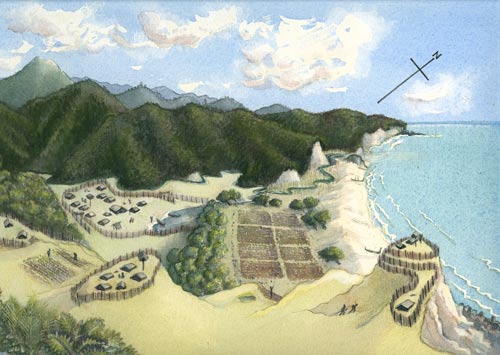
This is a composite of a number of aspects found in pre-European Māori settlements (kāinga). These villages were often coastal, and had access to both the sea and rivers. The highest mountain was usually associated with the hapū (sub-tribe) that lived in the settlement, and was often the burial place of the most important chiefs. Particularly in the North Island, gardens were important, and were often set on north-facing slopes to maximise the sun. Over time, fortified pā became increasingly important. They were often built on steep, inaccessible slopes with a view of the sea, from where attacks often came.
Using this item
Te Ara - The Encyclopedia of New Zealand
Watercolour by Rozel Pharazyn
This item has been provided for private study purposes (such as school projects, family and local history research) and any published reproduction (print or electronic) may infringe copyright law. It is the responsibility of the user of any material to obtain clearance from the copyright holder.





Add new comment